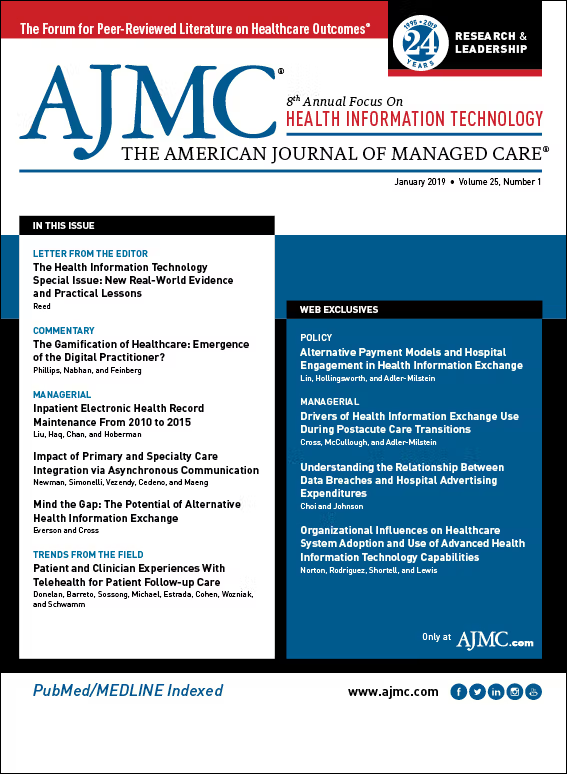- Center on Health Equity & Access
- Clinical
- Health Care Cost
- Health Care Delivery
- Insurance
- Policy
- Technology
- Value-Based Care
From the Editorial Board: Rajesh Balkrishnan, PhD
Major advances in leveraging information technology (IT) have started shaping the future of medical care today. The availability of technologies such as telemedicine and electronic health record capture has great potential to enhance the effectiveness, efficiency, and equity of medical care delivered to patients in managed care. A common finding across recently published studies in healthcare delivery is that although we have made great strides in enhancing the use of technology in medical care, it does not always translate to real gains for the patient in their daily life. Part of this is because of systemic differences and fragmentation of healthcare by patients, providers, and healthcare organizations. Health IT provides us with tools that can be cost-effectively used to manage care, such as by identifying patients at risk for poor outcomes and potentially avoidable expensive medical care. It can also be used as a tool to provide care to individuals who are traditionally reluctant to seek it because of geographical or socioeconomic barriers. Finally, it can be used to determine which medical care technologies are truly working for the patient populations that most need them. All of these are built into the principles of managed care, which emphasizes value-based medicine and care for the complex patient of today with multiple healthcare needs.
This issue of The American Journal of Managed Care® explores various facets of health IT in the recent past and how it has impacted delivery of health services in managed care settings. One study explores the important relationship between healthcare system organizational characteristics and adoption of advanced health IT capabilities. Another finds that participation in value-based incentives (such as alternative payment models) improves health information exchange structures in healthcare systems by increasing breadth, depth, and diversity of services, although it did have the effect of lowering volume. The value of telehealth is evaluated in another study, which finds that these services provide increased revenue to providers, efficiency to payers, and ease of availability to the patient without reducing effectiveness of care. Several new applications of health IT, such as asynchronous communication and gamification, show immense promise. The use of health IT seems to be increasing, as evidenced by data presented in one article, and is leading to substantial clinical role-oriented changes within surgical and emergency department areas and among nurses, physicians, and pharmacists in healthcare systems. However, these systems are also associated with potential problems, such as data breaches, which can be very expensive to healthcare systems. Nevertheless, health IT is here to stay, and its impact and usefulness as a tool in cost-effectively managing patient care seems to be increasing by the day. There is a need to continue to build stronger and more synergistic health IT applications that can continue to enhance the quality of medical care in an increasingly digital age.

Blister Packs May Help Solve Medication Adherence Challenges and Lower Health Care Costs
June 10th 2025Julia Lucaci, PharmD, MS, of Becton, Dickinson and Company, discusses the benefits of blister packaging for chronic medications, advocating for payer incentives to boost medication adherence and improve health outcomes.
Listen
Assessing New York’s Health Care Disparities Using Health Plan Quality Data
November 11th 2025Utilizing the Health Insurance Disparities Index for assessment, the authors found that New York’s Medicaid health maintenance organizations (HMOs) outperformed Medicaid HMOs nationally in addressing health care disparities from 2019 to 2023.
Read More

